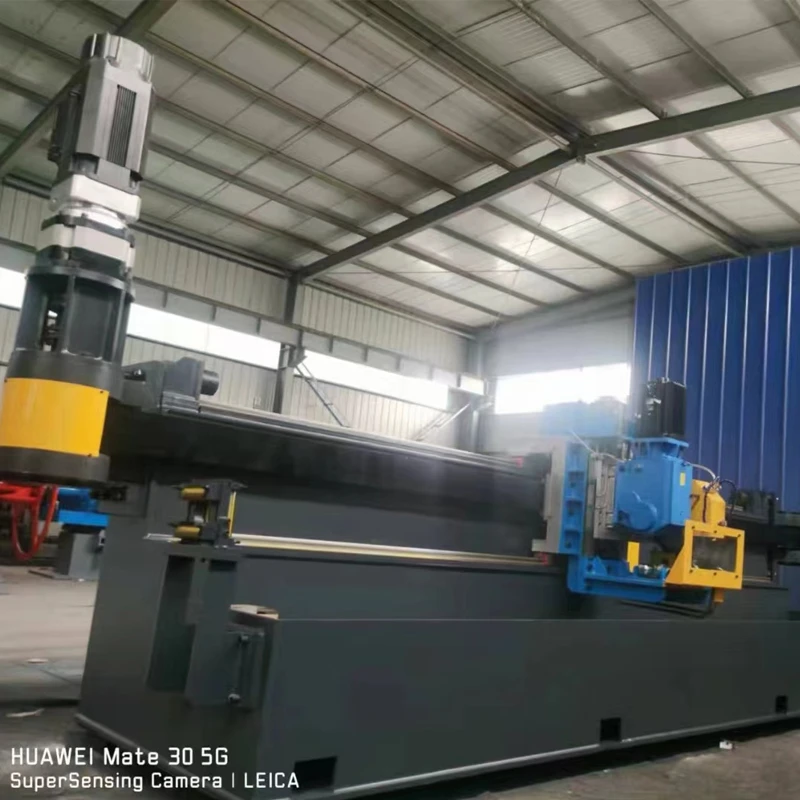Sheet Metal Straightening Process and Techniques for Optimal Results
The Essentials of Sheet Straightening Techniques and Benefits
In the realm of manufacturing and metalworking, the importance of sheet straightening cannot be overstated. A ‘sheet straightener’ is a specialized machine designed to correct the distortions and warps that can occur in metal sheets during the processing and handling stages. Achieving a perfectly flat sheet is crucial for various applications, as it ensures precision, longevity, and functionality of the final product.
Manufacturers typically deal with metals such as steel, aluminum, and titanium, which can experience deformation due to multiple factors, including thermal expansion, mechanical stress, and improper handling. When metal sheets are not straightened, it can lead to significant issues, particularly during welding, cutting, or assembly. For example, warped sheets can result in inaccurate cuts, poor weld joints, or mismatched components, which may compromise the structural integrity of the overall assembly.
Understanding Sheet Straightening Techniques
There are several techniques employed in the straightening of metal sheets, each suited for different situations and materials.
1. Roll Straightening This is the most common method used in industrial settings. It involves passing the metal sheets through a series of rolls that apply compressive forces to the warped areas, gradually bringing them back to a flat state. The alignment and adjustment of the rolls can be fine-tuned to accommodate sheets of various thicknesses and materials.
2. Press Straightening This method uses hydraulic or mechanical presses to apply localized forces to specific areas of the sheet, effectively counteracting the distortions. While this method is effective, it requires skilled operators to ensure precise force application to avoid further deformation.
3. Flame Straightening This technique utilizes controlled heating with a flame to expand and relax specific areas of a sheet. Once heated, the metal is then cooled in a controlled manner, allowing it to flatten out. Flame straightening is often used for thicker sheets or when a gradual correction is required.
4. Mechanical Straightening Some advanced machines use mechanical systems to straighten sheets by applying tension or compression in a controlled manner. This technology often employs electronic controls to ensure uniform results and minimize distortion.
sheet straightener

Benefits of Proper Sheet Straightening
The advantages of employing effective sheet straightening techniques are manifold, particularly in ensuring high-quality output.
- Enhanced Accuracy Straightened sheets provide a solid baseline for further processing. This accuracy translates to better fitting parts in assemblies, reducing the likelihood of gaps or misalignment.
- Increased Durability Warped sheets can contribute to weak points in the final product. By ensuring that each sheet is properly straightened, manufacturers enhance the overall durability and longevity of the end product.
- Cost Efficiency Although investing in straightening equipment or services may seem like an additional expense, the reduction in scrap rates and rework due to dimensional inaccuracies can lead to significant cost savings in the long run.
- Better Appearance For applications where surface finish is critical—like in automotive or appliance manufacturing—a straightened sheet provides a cleaner, more appealing product, which can be crucial in competitive markets.
Conclusion
In summary, the process of sheet straightening is a fundamental step in metalworking that can greatly influence the quality of the final product. By employing the right techniques—be it roll, press, flame, or mechanical straightening—manufacturers can overcome the challenges posed by warped and distorted sheets. Investing in proper straightening processes not only enhances the efficiency of production but also assures customers of the quality and reliability of the products they receive. As the industry continues to evolve, the methods and technologies for sheet straightening will likely advance, enabling even greater precision and performance in the manufacturing sector.
-
High Frequency Straight Seam Welded Pipe Production Line-BzZhou Xinghua Machinery Equipment Manufacturing Co., LTD.|line pipe steel&welded gas pipeNewsJul.30,2025
-
High Frequency Straight Seam Welded Pipe Production Line-BzZhou Xinghua Machinery Equipment Manufacturing Co., LTD.|High Precision&Automated SolutionsNewsJul.30,2025
-
High Frequency Straight Seam Welded Pipe Production Line - BzZhou Xinghua Machinery Equipment Manufacturing Co., Ltd.NewsJul.30,2025
-
High Frequency Straight Seam Welded Pipe Production Line-BzZhou Xinghua Machinery Equipment Manufacturing Co., LTD.|Precision Welding, High EfficiencyNewsJul.30,2025
-
High Frequency Straight Seam Welded Pipe Production Line|BzZhou Xinghua|Precision Welding&EfficiencyNewsJul.30,2025
-
High Frequency Straight Seam Welded Pipe Production Line - BzZhou Xinghua|Precision Engineering&EfficiencyNewsJul.30,2025


